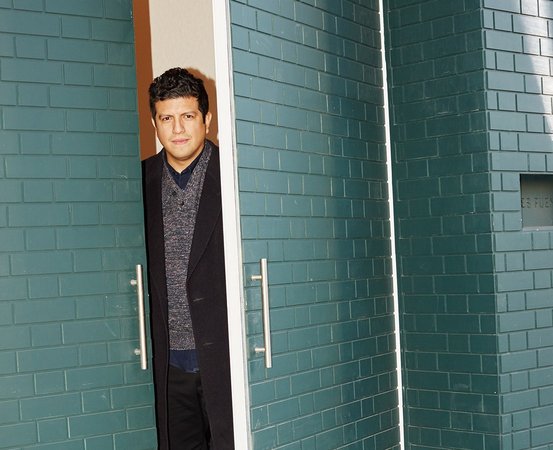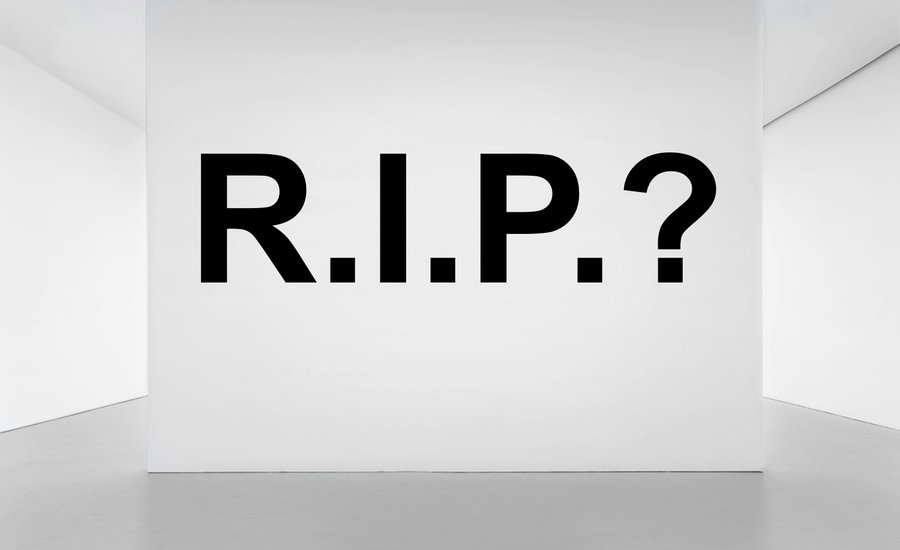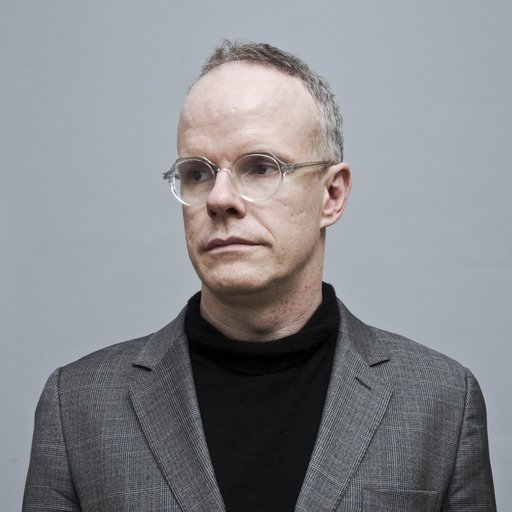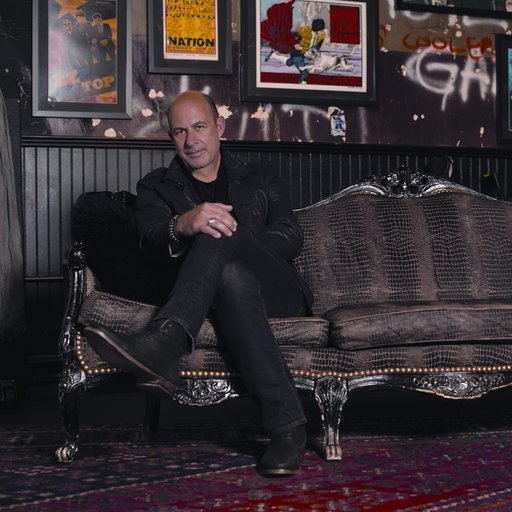For the past several months, Artspace's editors have persistently investigated the novel challenges and opportunities that the 21st century holds for the venerable brick-and-mortar gallery system, which has been shaken by both the shifting market and the disruptive power of the internet. Along the way, we’ve spoken at length to artists , dealers , advisors , and art fair directors in an effort to take the pulse of the industry.
In an effort to advance this discussion a step further as the year comes to an end, bringing on the uncertainty of 2017, we’ve reached out to a wide swath of art-world insiders to ask them each the same simple question: When it comes to selling art and supporting artists, what are the most promising alternatives to the brick-and-mortar gallery model today? Their responses, as you’ll see, run the gamut. We hope they supply some food for thought.
FOREST NASH
Founder,
Contemporary Art Daily

“Direct patronage. Passionate, supportive collectors buying many works of individual artists over time based on a genuine interest in their thinking and development. This can happen via a gallery relationship or directly, it doesn't matter. But I think collectors taking personal responsibility for the livelihood of a small group of artists will yield the most important collections of the future.”
ALIA AL SENUSSI
Chair, Tate Young Patrons Committee & Ambassador; Art Basel VIP Relations Middle East and Representative to the U.K.

"Travel. Open minds to new markets—and not just as a source of undiscovered money, but as a source of unrecognized and unappreciated culture."
JERRY SALTZ
Senior Art Critic,
New York Magazine

“1. I love art galleries.
2. I love art dealers.
3. I want all galleries to be able to survive; even the crappy ones.
4. I think almost all art has gotten too expensive.
5. On January 1, 2017 we devalue the Art World.
6. On that day we take a zero off every price over $10,000 across the board.
7. I have no idea what I'm talking about with business.
8. See points one, two and three.
9. I so wish I could smoke again.”
JANE & JAMES COHAN
Gallerists,
James Cohan Gallery

“It will be interesting to see if the younger galleries can break through to new models and modes of being there for artists both in terms of support and so everyone can make a living—artists and galleries alike. That's what I don't think is fully understood: if the galleries can't survive then the artists don't either. Unless they don't need us anymore, but experience tells us that they still do.”
AZIKIWE MOHAMMED
Artist, Born 1983, New York, New York. Lives and works in New York

"Most of the work I have been making for the past two years has been community-responsive, both in the actual process of making it and, once made, where I try to put it. White walls have rarely held a place for me, as the world we live is made of anything but. Shows in peoples homes, libraries, public places—these are the spaces that interest me, because these are where a non-self-identified-art-viewing crowd will see stuff. Those are the people I want to talk to.
But what about sales? How can an artist make a living showing work in an environment where sales aren’t the norm, or even spoken of? The model I am interested in seeing is larger organizations—be it foundations, blue-chip galleries, museums, or the like—providing financial support for artists engaged in public practice, and finding spaces for them to work in.
I’m not talking about Swizz Beatz ’s “No Commission” nightmare of gentrification and realtor-handshaking, with art as a kind of peace flag to whatever affected community. I want them to ask us artists how it’s supposed to work, and once we speak they listen."
MICHELE ROBECHHI
Editor,
Phaidon
's
Contemporary Artist Series

"The thing about brick-and-mortar galleries is that they don’t just sell art and support artist—they also engage with a live audience and interact with the cultural tissue of the place where they are located. As you said, they will probably have to adjust to the current climate, but I don't think they will ever be obliterated. The best thing they can do to survive is to focus on the present rather than trying to predict the future. If you let your business be ruled by apocalyptic predictions, you're inevitably doomed to fail."
HEATHER FLOW
Art Adviser

"The most promising alternative = the full realization of the omnipotence of the gallery’s exhibition program, experienced wholly in the flesh AND online."
MICHAEL PORTNOY
Artist, Born 1971, Washington, DC. Lives and works in New York.

"As we know, art has a very limited shelf life with most art works expiring a few weeks after they’ve been hung on a gallery wall and creating a horrid stench of irrelevance for the remainder of the exhibition. With immaterial works, the problem is much worse — dancers’ knee caps exploding and staining the floor, last week’s notions of Presence and Duration already looking as out of place as bellbottoms, and the amount of human waste accumulated after only a day of pestering visitors in a museum's atrium equal to the volume of Gagosian’s swimming pool and the weight of a medium size Serra .
So, I was super relieved when ImmaterialDirect.com opened business this past month. They load the performers up with carbs at the warehouse so you don't need to feed them on your own premises, they come pre-charged with five hours of charisma and can be tanned or bleached to blend in with any style of interior. For a slightly higher monthly fee you can have the choreography of their limbs encoded with daily trending topics, or split different eras of topicality across the body, for instance the slight trembling of the legs 128-bit encrypted with 1860s suffragist tracts while the clapping of hands alternately signifies 1970s patterns of urban blight or the subprime mortgage crisis, depending on where you're standing.
Each performance can also be customized with varying degrees of relationality, anywhere from complete avoidance of the spectator to full scale hacking of your social media presence, or even dancing inside your rib cage. This last option was much less intrusive than it sounds, and only required minor outpatient surgery and a recovery time of less than 3 weeks.
ImmaterialDirect’s carbon footprint is also much lighter than that of most galleries on the Lower East Side, since the performers are all delivered directly to your bathroom door via the sewers on self-driving boats which run on methane. And since the artists who create the works, with a few exceptions, have no real place in the economy of the art world, they are ground down every few years into a fine paste which is used to fertilize shrubs along the High Line."
JAMES FUENTES
Gallerist, James Fuentes Gallery

“For me there is no substitute for the brick-and-mortar space. We place a high value on the function such a space can serve in the community. I guess you can have an office that isn't accessible to the public and only do fairs. This, however, is not what we do.”
JEN HITCHINGS
Co-Director, Transmitter Gallery; Manager, Associated Project Team; Studio Manager

"In terms of selling art, especially in larger cities such as New York where it is becoming increasingly unaffordable to rent space, taking part in art fairs as independent curators—or even creating alternative art fairs to take place in cities coinciding with the larger fairs—seems to be a viable option to participate within the market without the overhead and need for year-round staff. Other options to make operating a gallery space more affordable are finding a larger space along with like-minded dealers and subdividing it to lower the cost of rent for each involved; renting one space and dividing the exhibition schedule among several dealers (such as Mulherin and Dutton galleries do on the Lower East Side); or forming a collective of curators to run a space and divide up costs and responsibilities.
Another option, as many established dealers in New York who are unwilling or unable to pay the exorbitant rising rents have done, is to find a space just a few hours outside of a major city in a more affordable neighborhood that is still accessible by public transportation. Oftentimes this provides more square footage, which allows for larger, more ambitious projects—and in many cases these spaces have a larger impact on their local community as a whole than the same program might have in a major city.
And, of course, social media helps provide global exposure of artworks and artists for every dealer, whether they have a space or not."
MICHELLE GRABNER
Artist, Born 1962, Oshkosh, WI. Lives and works in Oaks Park, IL.

“Although I can't imagine what these models might look like, I fully trust that artists and art merchants will evolve fantastic new systems of distribution and support for art and art-making. However, we fool ourselves if we think these new forms will arise from an ethical or critical position motivated by a changing market. These models will come to the fore because of cunning self-interest. 'It is not from the benevolence of the butcher, the brewer, or the baker, that we can expect our dinner, but from their regard to their own interest,' writes Adam Smith. And we all know that today’s artists and merchants possess a much greater attachment to individual cultural identity than 18th century European tradesmen.”
SARAH MEYOHAS
Artist and Founder of MEYOHAS Gallery

"Whether factually true or not, there is a certain feeling of precariousness in the air, politically, socially, economically. Art is not isolated from those forces. Developing methods to create structural stability serves not simply to cocoon the art space from outside forces, but to give it time to grow and figure out how to thrive.
I run a space in my 28th-floor apartment. We have avoided the fixed cost of renting a storefront space while still providing for physical, in-person engagement over a sustained period of time. Survival is never at stake. Not being bound to the objectives of anyone but ourselves affords a great deal of freedom for artistic expression. A foundational interest in exploring long-form, intimate viewing of installation-oriented work would not have been possible in a traditional gallery. But in the alteration of one’s personal space—which extends to the audience—it is."
JAMES PANERO
Editor,
The New Criterion

“The challenges we are seeing in the gallery world reflect the challenges in society: the formation of a barbell economy with weight at both ends and a narrowing at the center. What this means for the art economy is growth at one extreme with the expansion of the international mega-gallery, where economies of scale can take on the demands of the fair schedule to connect with the global rich. But this also means a contraction of much of the rest of Chelsea: galleries with excellent artists and sterling reputations that can no longer keep up with the demands of the new art economy. The only opportunity lies at the opposite extreme: apartment galleries and DIY spaces with low overhead connected through social media and word-of-mouth. This is what we've seen work in Bushwick and other ‘peripheral’ art communities.”
KAVI GUPTA
Gallerist,
Kavi Gupta Gallery

“I would make a large ‘back office’ to help our artists with projects and museum shows, and then work with the inventory to move it around the world, hopefully to public venues—both museums and new public exhibition programs, which cities would support in this hypothetical—in addition to art fairs. We spend much of our time promoting and producing projects for our artists that have little to do with our own white cubes, so it seems logical to build a business model around this that is basically an atelier focusing on digital media/promotion for this new era, and also substantial production of artist projects. We’d be more mobile, and freed up to do more for our artists.”
NOAH HOROWITZ
Director, Art Basel Miami Beach

“We steadfastly believe that where the long-term support of artists is concerned, the fundamental brick-and-mortar gallery model is still alive and well—although it's constantly evolving. In the end, this is where context and meaning continue to be consecrated, where artist's latest ideas and innovations are tested out, and where communities—of collectors, curators, writers, enthusiasts and fellow artists and gallerists—are built.
This being said, we are absolutely aware of the many and profound changes being wrought on the industry nowadays, from its event-driven turn to its global dimensions, speed, digital disruptions, and rife competition. The white cube, to be sure, is no longer the dominant paradigm, as successful galleries have cropped up in any number of divergent industrial, domestic, and alternative spaces in recent years. Equally, the very nature of artistic representation is changing, with younger galleries no longer just showing emerging artists, with established galleries taking on cutting-edge positions, and with regional borders falling by the wayside.
But seen through a broader lens, one shouldn’t forget that change is intrinsic to our field and that galleries have continually evolved in response to the market since the inception of Art Basel in 1970—and well before. With this perspective in mind, we look forward to continuing to support galleries in their efforts to show the great artists of our time, and to continuing to push boundaries together with them in order to achieve this in a sustainable and intelligent fashion. We therefore not only believe in the gallery system, but also see our fairs as gateways to these galleries."
ELLEN SWIESKOWSKI
Founder,
See Saw

"It’s exciting that young or under-recognized artists are now able to build substantial audiences for their work online before locking down gallery representation. Whether on Instagram or Etsy, the general idea that artists can easily interact and transact directly with people interested in their work seems more promising than any specific platform. That said, at See Saw we think art is still best seen in galleries!"
NICOLA TREZZI
Critic, Curator, Artist

“In the last years, since the art fair has become the main avenue for selling art, we have experienced three important consequences: (1) galleries from the so-called periphery are now able to stay where they are and reach collectors, curators, etc. through the context of the art fair; (2) small and middle-size galleries from the so-called center are struggling more and more trying to break even, considering the big overheads they have to face, and (3) these mid-size galleries are at the same time trying to avoid a situation in which they see their sellable artists going to a bigger and bigger gallery.
In this scenario there are new players who are not taking any of the aforementioned paths, trying to create alternative models that are based on being flexible, mobile, and multitasking. They don't contradict the gallery model, they just work next to it, they complement it, making the art ecosystem more and more complex and rich.”
CAROLE SERVER
Collector

“I know for us, we would not buy on the internet unless it was an artist we were really familiar with or we did it to support an arts charity. I strongly feel that only arts organizations should ask artists for works to auction, but that’s another story. I do not see any real alternative to brick-and-mortar galleries. I think the gallery model is good for both artists and collectors.”
RICKY MANNE
Director,
Marianne Boesky Gallery

“I disagree with the premise of the question. I just don't feel we have stopped allowing the artists we work with to be as adventurous as they want... and in fact I still feel galleries our size are able to be more adventurous than galleries that have to knock out sales of Joe Bradley and Mark Grotjahn paintings as quickly as possible to keep up with their global empires.”
MAGNUS RESCH
Author,
Management of Art Galleries

“Galleries need to move away from the idea of renting a permanent exhibition space in a prime location. Why? Because you are not a (publicly funded) museum or Gagosian . Rent is the number-one cost-driver and it's killing galleries. Also, location has zero impact on the success of a gallery. In contrast, galleries need to rent temporary spaces in different cities around the world and create events to attract buyers.”
DOUG WOODHAM
Former President, Christie's Americas

"To attract buyers, galleries must innovate in how they communicate and engage with prospects. With almost 69 million people in the United States now having four or more years of higher education (an increase of 24 million since 2000), cultural literacy and arts appreciation has become an important social requirement to effectively navigate the worlds of business, finance, and professional services. But many of these potential new collectors find the art world confusing and opaque relative to how they purchase other luxury items and services. Galleries that provide a robust digital experience—complemented by exciting in-gallery events and shows—will likely be the long-term winners."



























